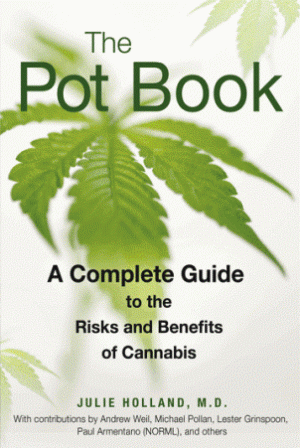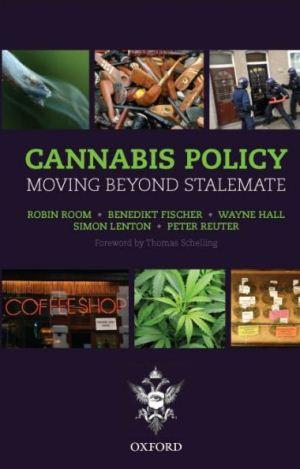New England has emerged as a hotbed of marijuana law reform. Why is that?
We review two books on marijuana -- one a comprehensive anthology, the other, a studious work on changing pot policy.
Medical marijuana is a big business and only getting bigger, according to a new study produced by a financial analysis firm.
Honduras's first cocaine lab is discovered, a New Mexico town's mayor and police chief are arrested for alleged gun running, a former Juarez Cartel boss will stand trial, and Ciudad Juarez suffers from the continued nightmare of drug trade violence (as do many other places).
It was a relatively quiet week on the crooked cop front -- not including officers who've gone astray but haven't been caught -- but we've still got us a trio of law enforcement miscreants.
ProCon.org is a series of in-depth web sites presenting information and views on controversial issues, several of which relate to drug policy. The Chronicle is running a six-part series of info items from ProCon.org, and we encourage you to check it out.
A bill that would allow medical marijuana patients to present an affirmative defense in court has passed the Maryland Senate.
An Illinois medical marijuana bill is heading for a House floor vote. Last year, it passed the Senate, only to fail in the House. Let's hope we get a better outcome this year.
Add Kentucky to the short list of states that have banned the synthetic stimulant mephedrone, typically marketed as "bath salts."
A member of a Southern California drug task force shot and killed a man armed with a shotgun during a Friday morning drug raid. That makes 20 dead in the US drug war so far this year.
Long Island cops moved in to make a small-time drug bust, the suspect apparently swallowed the drugs, and now he's dead. That makes 21 dead in US domestic drug law enforcement operations so far this year.
Events and quotes of note from this week's drug policy events of years past.
Over, the past decade, New England has quietly emerged as a center of marijuana law reform. Outside of the West, no other region of the country has matched the advances of that historic corner of America bounded by New York, Canada, and the North Atlantic. Is there something in the maple syrup?

Old North Bridge, Concord, MA (Jim Louzouski, nps.gov)
When New England comes to mind, people tend to think of the leaves turning in the fall, the wild and rocky Maine seacoast, Vermont's Green Mountains, or Boston and its historic role in the American Revolution. But given what the region has accomplished in terms of marijuana policy, perhaps it's better to think of it as an ongoing social experiment, and the question to ask is: Why New England?
New England consists of six states -- Connecticut, Maine, Massachusetts, New Hampshire, Rhode Island, and Vermont -- with a combined population of 14.4 million. It is dominated by megalopolitan Boston, whose 7.4 million residents make up more than half the region's residents. But all six states combined still contain fewer people than Florida, New York, Texas, or California.
Of those six states, half have already passed medical marijuana laws (Maine, Rhode Island, and Vermont) and a third have already decriminalized pot possession (Maine and Massachusetts). In both cases, New England scores well above the national average. In fact, outside of New England and the West, from the Dakotas to the Carolinas and from the Rio Grande to the Potomac, the landscape for pot law reform has been largely harsh and barren.
And New Englanders aren't resting on their laurels. The region is intent on remaining in the pot reform vanguard. Whether it's medical marijuana, decriminalization, or legalization, New Englanders are keeping the pressure on.
In Connecticut, where Republican Gov. Jodi Rell vetoed a medical marijuana bill in 2007, current Democratic Gov. Dan Malloy is pushing both medical marijuana and decriminalization bills, the latter as part of a broader corrections reform package. In Rhode Island, which already has a medical marijuana law, the licensing of dispensaries began this month. Legislators there are considering both decriminalization and legalization bills.
In Maine, where possession of up to 2.5 ounces is already decriminalized, there is a bill to double that to five ounces -- and to decriminalize the cultivation of up to six plants, as well. In Massachusetts, where voters decriminalized marijuana through the initiative process in 2008, activists continue to push the envelope. Both medical marijuana and legalization bills have been filed.
In New Hampshire, where a medical marijuana bill was vetoed by Gov. John Lynch (D) in 2009, a new medical marijuana bill passed the House earlier this month and awaits consideration by the Senate. In Vermont, which already has medical marijuana, a bill to allow two nonprofit dispensaries to open up is moving. So is a decriminalization bill endorsed by Democratic Gov. Peter Shumlin.
While the passage of these bills is by no means assured, the battles are being fought and advances are being made. Observers of the scene say that's only par for the course in a region that has been a crucible for progressive social movements since the days of John Adams and Paul Revere.
It's not only the Revolutionary War heritage, of course; New England has been the home of critical social thinkers such as Emerson and Thoreau, a hotbed of the abolitionist movement in the 19
th Century, birthplace of the anti-nuclear movement in the 20
th Century, and among the first areas to feel the impact of the Industrial Revolution.
It also the land of participatory democracy through its storied town meetings. And it is the most politically liberal region of the country. Four of its six state houses are controlled by Democrats, and even the region's Republicans are moderate compared to the rest of the country. It is also home to the nation's only socialist senator, Bernie Sanders of Vermont, and only independent governor, Lincoln Chafee of Rhode Island (formerly a moderate Republican).
Not least of all, it is also hosts one of the densest concentrations of college students in the land. New England is home to Harvard, Yale, Brown, and Dartmouth (half of the Ivy League), as well as MIT, half of the historically liberal arts women's colleges known as the Seven Sisters, and the Five Colleges consortium in Western Massachusetts. The Boston area in particular is crawling with students.
"In New England, we have a rich history of standing up and speaking truth to power dating back to even before this country was founded," said Tom Angell, a New Englander born and bred, who rose through the ranks as an activist with
Students for Sensible Drug Policy (SSDP) at the University of Rhode Island and as staff in the national office SSDP in Washington, DC, before taking his current position as communications director for
Law Enforcement Against Prohibition (LEAP). "This is really in our blood," he said.
Angell pointed to the critical role of student activists in the region. "We have this enormous concentration of colleges and universities, and, at least from a Rhode Island perspective, many of the campaigns we've seen over the past few years were initiated by or happened with members of SSDP chapters," he said. "Students from the University of Rhode Island and Brown founded the
Rhode Island Patient Advocacy Coalition and did all the legwork building coalitions" that led to passage of the medical marijuana bill there, he said.
A relatively small population in the region also plays a role, activists said. "The populations in New England are smaller, and it's easier to get public education done," said Morgan Fox, a spokesman for the
Marijuana Policy Project. "There is also a lot of public support for reform, as well as a tradition of independent thinking regarding any type of policy issues."
"There are fewer people here and less bullshit," said Cliff Thornton, a long-time Connecticut-based drug reformer. "California alone has almost three as many people as all New England. When you understand that, you understand why there are fewer voices for prohibition."
New England is fertile ground for reform, said Thornton, who was quick to add that he was not just talking about pot law reform and was in fact critical of reformers who concentrated solely on marijuana. "It seems like all of a sudden everyone just woke up," Thornton said. "Every damned week, there is some type of forum on marijuana or prohibition or prison. I think here in New England we've reached critical mass, and people feel safer now coming out against the drug war."
But critical mass doesn't just suddenly happen, and it is here that the region's more immediate history of drug reform activism plays a role. To take just one regional example, the Boston Freedom Rally, the nation's second-largest marijuana reform event (behind Seattle's Hempfest) has been going on since 1989, and the
MassCann activists associated with it have spent the last decade running non-binding public policy questions on medical marijuana, decriminalization, and legalization. They have never lost, and that wins them some leverage at the state house.
"Here in Massachusetts, 20 years of activism has played a key role in getting us to where we are today," said MassCann's Bill Downing. "Massachusetts is so active because we have a history, a tradition of civil activity here, and many people in Massachusetts believe it's their patriotic duty; that's how democracy works."
"Activism has made a tremendous impact in New England," said Thornton. "I've been doing this for a long time, but now other organizations are springing up, and over the years, we've garnered a lot of credibility. We've got some good activists now and they have been able to turn a lot of people around."
MassCann's Downing also saluted young people and suggested that the region's marijuana reform movement has matured enough to allow for a changing of the guard. "We have so many young people in Boston," he said. "For years, we've been reaching out to them, and it's paying off. Our board of directors just had a sea change, with a lot of new people and a lot of women coming in. Last year, we didn't have any women on the board; now there are five."
For reasons historical and demographic, cultural and geographic, New England is clearly in the vanguard of marijuana law reform. And, as MassCann's Downing noted, the same spirit that animated the Founding Fathers animates reformers today.
"People forget that the major reason marijuana law reform is good is because we are more free," he said.
back to top
The Pot Book: A Complete Guide to Cannabis -- Its Role in Medicine, Politics, Science and Culture, edited by Julie Holland, MD (2010, Park Street Press, 545 pp., $19.95 PB)
Cannabis Policy: Moving Beyond Stalemate, by Robin Room, et al., 2010, Oxford University Press, 233 pp., $59.95 PB)
The literature of marijuana is booming. Hundreds of new titles have appeared in recent years and more are coming this year in a bid to assuage the reading public's seemingly insatiable appetite for books about pot. Two of the better contributions from last year are
The Pot Book and
Cannabis Policy.
One is broad in scope while the other is narrowly focused, but both turn a sharp eye on their respective subject matters. For Dr. Julie Holland and more than 50 contributors to The Pot Book, the subject matter is damned near anything having anything to do with marijuana, while for Robin Room and his crew of academic collaborators, including the University of Maryland's Peter Reuter,
Cannabis Policy is all about, well, changing the pot laws.
The Pot Book is a virtual
Encylopedia Cannabinica, with contributions ranging from ancient history to cutting edge research. Stoner culture mavens will read about everything from primitive cannabis cults and ancient Chinese medicine to modern pot culture and politics, and they will be regaled by some of the country's leading experts on various aspects of the world of marijuana.
The politics of pot are discussed by the likes of the Drug Policy Alliance's Ethan Nadelmann, NORML's Allen St. Pierre, the ACLU Drug Policy Project's Graham Boyd, and former Marijuana Policy Project spokesman Bruce Mirken, among others. Tommy Chong adds a bit of comic relief about getting busted, although he finds it "not so funny."
But none of that is likely to be news to readers of the Chronicle. What is more exciting is to see contributions from people who have made their reputations outside the marijuana movement. Famed food writer Michael Pollan has a fascinating essay on "Gardener's Rights, Forgetting, and Co-Evolution," while natural medicine figure Dr. Andrew Weil contributes an interview on the clinical applications of cannabis.
A section on the risks of use and harm reduction is noteworthy for actually applying the concept of harm reduction to marijuana use and, one hopes, widening the awareness of harm reduction among readers who aren't wonks or activists. It, too, includes some of the foremost experts on various aspects of marijuana use, such as NORML's Paul Armentano on pot and driving and Professor Harry Levine on race and marijuana arrests.
Likewise, contributions on medical marijuana, pot cultivation, early and recent history, and cannabis culture feature cogent, well-informed writing. Novelist and essayist Douglass Rushkoff's "Cannabis: Stealth Goddess" was especially enjoyable, and an interview with philanthropist and Progressive Insurance founder Peter Lewis looks at a usually neglected part of the world of marijuana -- financing reform.
At more than 500 pages,
The Pot Book has something for you if you have any interest in marijuana whatsoever. And even the most obsessive and knowledgeable stoners are going to find new nuggets of information.
While The Pot Book touches on marijuana policy reform,
Cannabis Policy is all about it. This is serious, staid, academic stuff, likely to be of interest to serious reformers and activists, but less so for your average pot smoker.
The academics behind
Cannabis Policy review the literature on the relationship between marijuana prohibition enforcement policies and use levels and find little correlation, an important but too often overlooked finding. After all, if enforcing pot laws more harshly does not achieve the putative goal of prohibition -- reducing marijuana use -- then why do it?
They also examine alternative approaches to marijuana possession, including depenalization (still illegal, but with non-penal punishments), decriminalization (no criminal record),
de facto legalization (the Netherlands), and
de jure legalization (Alaska), and their implications, in terms of both policy and politics.
Most usefully,
Cannabis Policy examines how far marijuana law reforms can be pushed and still remain within the bounds of the UN drug conventions and, more excitingly, how the conventions could be amended or undone to allow for a legal marijuana industry. The authors are not exactly sanguine about the prospects for undoing a half-century of global prohibition (the 1961 Single Convention on Narcotic Drugs celebrated its 50
th birthday this month), but they have presented a road map for doing so.
The Pot Book illustrates the scope and breadth of marijuana's impact in the modern world, while
Cannabis Policy looks at the nuts and bolts of policy making and the social science that should underpin it. Both are welcome contributions to the literature.
back to top
The size of the US medical marijuana market is $1.7 billion, and that figure is likely to increase in coming years, according to a new report from See Change Strategy LLC, an independent financial firm. An executive summary of the report, The State of the Medical Marijuana Markets 2011, is available at MedicalMarijuanaMarkets.com.
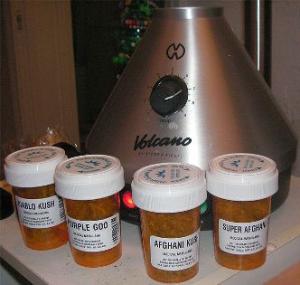
The medical marijuana business: a growth industry. (Image via Wikimedia.org)
"Hundreds of businesses exist around the country that cultivate and sell marijuana to customers," said report author Ted Rose in a statement. "Many of these businesses emerged in the wake of the Obama administration's decision to deprioritize federal prosecutions of individuals and business complying with state medical marijuana laws.
The State of the Medical Marijuana Markets 2011 shows which states represent the most active markets, who is making money, and how are they doing it."
Although 15 states and the District of Columbia have medical marijuana laws, sales of medical marijuana through retail outlets are currently legal in only seven of them (and only arguably legal in some of those). But four more states and DC are expected to begin medical marijuana sales this year, the report said. Between expansion of the number of locales where medical marijuana is sold, increases in the number of patients taking advantage of medical marijuana laws, and increasing regulatory clarity, the market is set for further growth, Rose said.
"We predict that the current markets will double in the next five years," he said in a Wednesday conference call. He estimated that the size of the medical market will reach $8.9 billion by 2016.
The report found that one in four Americans live in medical marijuana states and that nearly 25 million could currently qualify as medical marijuana patients. Only about 730,000 are currently doing so.
In a sign of a maturing industry, Rose said medical marijuana business operators were more worried about regulations and obtaining financing then they were about competition or getting busted. He said that 90% of operators saw medical marijuana as a growth industry.
The study was conducted over the course of eight months and consisted of surveys and interviews with about 300 businesses in the medical marijuana industry.
back to top
by Bernd Debusmann, Jr.
Mexican drug trafficking organizations make billions each year smuggling drugs into the United States, profiting enormously from the prohibitionist drug policies of the US government. Since Mexican president Felipe Calderon took office in December 2006 and called the armed forces into the fight against the so-called cartels, prohibition-related violence has killed more than 36,000 people, including more than 15,000 last year. The increasing militarization of the drug war and the arrest of dozens of high-profile drug traffickers have failed to stem the flow of drugs -- or the violence -- whatsoever. The Merida initiative, which provides $1.4 billion over three years for the US to assist the Mexican government with training, equipment and intelligence, has so far failed to make a difference. Here are a few of the latest developments in Mexico's drug war:

Ciudad Juarez
In Honduras,
authorities discovered a cocaine lab which was used to process up 200 to 400 kilos of cocaine a week. The lab – which processed cocaine paste into powdered cocaine hydrochloride – is the first of its kind discovered in Honduras, and among the first discovered in Central America. Honduran officials have suggested that the lab might have belonged to El Chapo Guzman’s Sinaloa Cartel.
Thursday, March 10
In Columbus, New Mexico,
the mayor and police chief were arrested along with nine other suspects for allegedly running guns to Mexico. According to the 84-page indictment, Columbus mayor Eddie Espinoza and the other suspects trafficked some 200 firearms to Mexico, including a shortened AK-47 variant. Columbus is just across the border from Palomas, Chihuahua, which has seen high levels of drug-related violence.
In Ciudad Juarez, former army office and Tijuana police chief
Julian Leyzaola took command as police chief. He is widely credited with bringing down the level of drug-related crime in Tijuana, but has been criticized for violating the human rights of officers he thought to be corrupt.
Three days after taking office, a man (who had been tortured but was alive) was found wrapped in a blanket
alongside a note welcoming Leyzaola to Ciudad Juarez. The note was signed by the Sinaloa Cartel, which is battling the Juarez Cartel for control of the cities drug trafficking routes and distribution points.
In Ciudad Juarez,
five people were murdered in several incidents. In one incident, a federal police officer was gunned down as he left his home. According to researcher Molly Molloy, these killings bring the number of dead in Ciudad Juarez to 8,000 since January 2008.
Saturday, March 12
In Ciudad Juarez,
eight people were murdered. In one incident, a man escaped gunmen who attacked his home, but was later discovered hiding in the bathroom of a nearby business and shot dead. A 58-year old woman who owned the business was also gunned down. In another incident, a security guard was dragged from his car and shot dead in front of his infant son.
In San Fernando, Tamaulipas,
eight suspected Zetas were killed during an army raid on an armed camp. Nine others were captured, and 12 vehicles, weapons, uniforms and 150 pounds of marijuana were seized. One of the captured individuals said she had been held captive at the camp.
In Guamuchi, five people were killed at a wake for a young man who was recently murdered in Nayarit. Initial reports indicated that at least a dozen SUVs full of gunmen were involved in the attack. One of the victims appears to have been the father of the man killed in Nayarit."
Tuesday, March 15
In Mexico City,
a judge decreed that the son of a former Juarez Cartel boss is to stand trial on Monday
laundering charges. Vicente Carillo Fuentes is the son of Amado Carillo Fuentes, who led the Juarez Cartel under his death in a botched plastic surgery operation in 1997. His uncle, also named Vicente, is the current leader of the cartel.
In Nuevo Laredo, Tamaulipas, a female
prison warden died after being stabbed repeatedly by an inmate. Warden
Rebeca Nicasio’s predecessor disappeared last December after 150 inmates escaped from the same prison under mysterious circumstances.
Total Body Count for the past two Weeks: 341
Total Body Count for the Year: 1,661
Total Body Count for 2010: 15,273
Total Body Count for 2009: (
approx.) 9,600
Total Body Count for 2008 (
approx.): 5,400
Total Body Count for 2007 (
approx): 4,300
Total Body Count for Calderon's drug war through 2010: 34,849
Total Body Count for Calderon's drug war to date: 36,510
back to top
It was a relatively quiet week on the crooked cop front -- not including officers who've gone astray but haven't been caught -- but we've still got us a trio of law enforcement miscreants. Let's get to it:

Prohibition's filthy lucre is too much for some to resist (Image via Wikimedia)
In Modesto, California,
a Modesto police officer was arrested Monday after an internal investigation found he had seized drugs and failed to turn them in as evidence. Officer Anthony Trock, a four-year veteran of the department, is charged with possession of a controlled substance, furnishing illegal drugs, and embezzlement. Trock went down after a citizen complained and Internal Affairs investigated. The investigation turned up several instances where Trock seized drugs from people while on duty, but did not turn them in. In one incident, Trock gave marijuana he seized to another person. He is on administrative leave.
In Decatur, Alabama,
a Morgan County jail guard was arrested March 22 on charges he was selling drugs at the jail. Guard Marquez
Laroy Goodwin, 22, sold marijuana to undercover agents, and when he was later pulled over in a traffic stop, was found in possession of a handgun and marked money from the buy. He is charged with unlawful distribution of a controlled substance. The sheriff says he will be fired, and that other guards could be involved. Stay tuned.
In Montello, Wisconsin,
a former Marquette County Sheriff's deputy was sentenced March 23 to six months in jail for stealing drugs from an evidence room. Former deputy Daniel Card, 34, had pleaded guilty in January to misdemeanor charges of theft and entry into a locked room without permission. He had been found guilty in March 2009 of felony drug possession for taking drugs from the evidence room in April and May 2007. Investigators also found drugs missing from cases in 1996, 1997, and 2006. Card must also undergo a drug and alcohol assessment and possible treatment.
back to top
Is the D.A.R.E. program good for America's kids? Read the arguments and the evidence for and against, on the web site dare.procon.org, part of the ProCon.org family.
Follow Drug War Chronicle for more important facts from ProCon.org over the next few weeks, or sign up forProCon.org's email list or RSS feed. Read last week's ProCon.org blurb here.
ProCon.org is a web site promoting critical thinking, education, and informed citizenship by presenting controversial issues in a straightforward, nonpartisan primarily pro-con format.

back to top
A bill that would provide Maryland medical marijuana patients with an affirmative defense to criminal marijuana possession charges passed the state Senate Thursday on a 41-6 vote. It now heads to the House of Delegates for a floor vote.

Patients could still be arrested, but not convicted, under the proposed law. (Image via Wikimedia.org)
The bill,
Senate Bill 308, builds on the 2003 Darrel Putnam Compassionate Use Act, which allowed for a medical necessity defense, but only to limit sentences. Under the 2003 law, qualified patients could still be found guilty and stuck with a misdemeanor conviction record, but could only be fined a maximum of $100.
SB 308 amends the 2003 law so that patients with "clear and convincing evidence" that they need to use marijuana for medical reasons are no longer found guilty and fined $100, but "if the court finds that the person used or possessed marijuana because of medical necessity, the court shall enter a finding of not guilty."
Unlike other medical marijuana states, patients are not protected from arrest and prosecution, but must instead defend themselves in court. Nor are there any provisions for them to grow their own medicine or buy it in dispensaries. But SB 308 does contain a provision that calls for a study group to study more comprehensive legislation for next year.
In a
press release after Thursday's vote, the medical marijuana support group
Americans for Safe Access (ASA) said that an earlier, comprehensive version of SB 308 had to be amended after its House companion bill stalled over fears its proposed state-run production and distribution system would cost too much. ASA said those cost estimates by the Department of Health and Mental Hygiene were "extremely inflated," but necessitated a tactical retreat if any legislation was to pass.
"Rather than endure another failed attempt to pass meaningful medical marijuana policy in Maryland, patients have instead decided to support this stopgap measure," said Caren Woodson, ASA's government affairs director. "It's not ideal, but the bill will help patients avoid what is now a guaranteed conviction if arrested."
Maryland continues taking half-steps on the path toward becoming a medical marijuana state, but it's hard to argue with compromises that keep patients from getting fines and criminal records. Now, it's up to the House of Delegates.
back to top
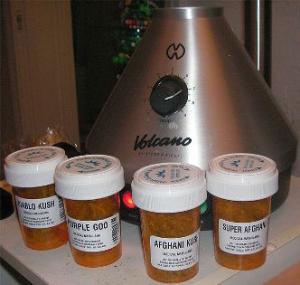
"Nonprofit medical cannabis organizations" would provide marijuana to patients under the Illinois bill. (Image via Wikimedia)
A medical marijuana bill in Illinois passed its final House committee hurdle Monday and now heads for a House floor vote. The bill,
House Bill 30, was approved by the House Healthcare Availability and Accessibility Committee.
The bill would allow people diagnosed by a physician with a debilitating medical condition and their caregivers to register with the Department of Public Health. Patients could possess up to 2 ½ ounces of marijuana every two weeks. They would obtain it from a "nonprofit medical cannabis organization" registered with the state.
The bill proposes only a pilot project. It calls for the legislation to expire after three years.
In the last session, a similar bill passed the state Senate, but died in a close vote in the House.
back to top
Kentucky has become the latest state to ban the synthetic stimulants mephedrone and MDPV, which are commonly marketed as bath salts. Gov. Steve Beshear has signed into law House Bill 121, which makes possession of the substances a Class B misdemeanor and manufacturing or trafficking in them a Class A misdemeanor.
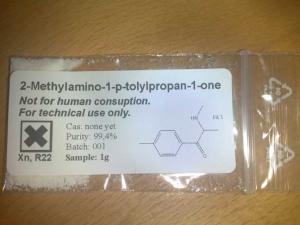
No new legal drugs for you, Kentucky! (Image via Wikimedia.org)
The drugs are reported to have effects similar to cocaine, ecstasy, or methamphetamine. Poison control centers and hospital emergency rooms have reported an increasing number of incidents involving people using them.
The drugs have been banned in a handful of states, but are not currently illegal under federal law.
"This bill gives law enforcement another tool to protect Kentuckians from substances that are engineered specifically to mimic illegal dangerous drugs and allows Kentucky to keep pace with an ever-changing drug market," Gov. Beshear said.
Kentucky passed a law banning synthetic cannabinoids last year. This year's mephedrone ban also adds new chemicals to the list of banned cannabinoids to reflect chemicals developed since that law was passed.
back to top
[Editor's Note: This year, Drug War Chronicle is trying to track every death directly attributable to drug law enforcement during the year. We can use your help. If you come across a news account of a killing related to drug law enforcement, please send us an email at [email protected].]
[Update: According to the Lake Elsinore-Wildomar Patch, neighbors Tuesday identified the dead man as Fred L. Smith and had created a memorial at the gate of his property.]

It's not always this bucolic in Riverside County (Image via Wikimedia)
An as yet unidentified 58-year-old Lakeland Village, California, man was shot and killed Friday by a deputy with the Riverside County Sheriff's Department Southwest Corridor Narcotics Task Force as officers served a narcotics search warrant on his home. He becomes
the 20th person to die in US domestic drug law enforcement operations so far this year.
According to a
press release from the Riverside County Sheriff's Department, the raid took place at 7:00am, and "one suspect was shot after brandishing a shotgun at one of the deputies." The man was pronounced dead at the scene.
The press release does not give any further details about where in the residence the man was killed or whether the warrant was a "no knock" warrant. No eyewitness accounts have emerged so far.
Neighbors told the local newspaper
The Press-Enterprise the dead man was a methamphetamine dealer and "a nice guy." Denny Borders said the man once told him he kept a shotgun under the bed, but that he wasn't violent. "He wasn't a fighter or anything," he said, "he wasn't a violent person."
Another neighbor, Susan Dreiske, said that while she was troubled by activity at the man's home, she would sometimes chat with him about gardening and that he had recently planted fruit trees in his front yard. "It's sad that he's gone," she said, "but the officers are just trying to do their jobs."
The incident is being investigated by the Riverside Sheriff's Department Central Homicide Unit. The unidentified deputy who shot the man is on paid administrative leave.
back to top
[Editor's Note: This year, Drug War Chronicle is trying to track every death directly attributable to drug law enforcement during the year. We can use your help. If you come across a news account of a killing related to drug law enforcement, please send us an email at [email protected].]

Uniondale, New York, where a man died after swallowing drugs in a bid to avoid arrest. (Image via Wikipedia)
A Long Island man who allegedly fled police after they saw him involved in a possible drug deal died early Sunday morning after swallowing what appeared to be crack or powder cocaine and going into cardiac arrest. He becomes
the 21st person to die in US domestic drug law enforcement operations so far this year.
According to police, officers approached Benjamin Jackson, 43, after observing the possible drug deal. He fled, hiding in bushes near his home.
Undercover officers heard a crunching noise and saw Jackson "spitting out what appeared to be crack or cocaine," then arrested and handcuffed him, police said.
Officers called for an ambulance, but said Jackson's heart stopped before it arrived. The officers performed CPR and regained a pulse, but Jackson died at Nassau University Medical Center an hour and a half after he was arrested.
A medical examiner's report is pending.
back to top
April 1, 1909: The Opium Exclusion Act takes effect.
April 3, 1953: With the support of Allen W. Dulles, director of Central Intelligence, Richard C. Helms proposes funding for a biochemical warfare research program named MKULTRA, which among other things administers LSD to its unknowing participants.
April 2, 1988: The Economist editorializes in favor of bringing drug users within the law by allowing them to purchase limited doses of drugs that have been manufactured and distributed legally.
April 6, 1995: ABC News airs a special entitled "America's War on Drugs: Searching for Solutions" in which legalization is presented as an alternative to the failing war on drugs.
April 6, 1998: Dr. Dennis Rosenbaum's six year study of 1,798 students, "Assessing the Effects of School-based Drug Education: A Six Year Multilevel Analysis of Project DARE," finds that "DARE had no long-term effects on a wide range of drug use measures," that DARE does not "prevent drug use at the stage in adolescent development when drugs become available and widely used, namely during the high school years," and that "DARE may actually be counterproductive."
April 1, 2000: Canada's premier national newspaper, The National Post, editorializes in favor of legalizing marijuana.
April 5, 2000: The Journal of the American Medical Association publishes "Trends in Medical Use and Abuse of Opioid Analgesics." The researchers conclude: "Conventional wisdom suggests that the abuse potential of opioid analgesics is such that increases in medical use of these drugs will lead inevitably to increases in their abuse. The data from this study with respect to the opioids in the class of morphine provide no support for this hypothesis. The present trend of increasing medical use of opioid analgesics to treat pain does not appear to be contributing to increases in the health consequences of opioid analgesic abuse."
April 6, 2000: The First National Clinical Conference on Cannabis Therapeutics convenes at the University of Iowa.
March 31, 2001: An editorial in The Lancet -- the United Kingdom's top medical journal -- criticizes the futility of drug prohibition and America's present anti-drug strategies.
April 2, 2003: US Rep. Ron Paul asks the US Government Accountability Office (GAO) to investigate whether the Office of National Drug Control Policy violated the Congressional ban on spending funds on publicity or propaganda.
back to top

